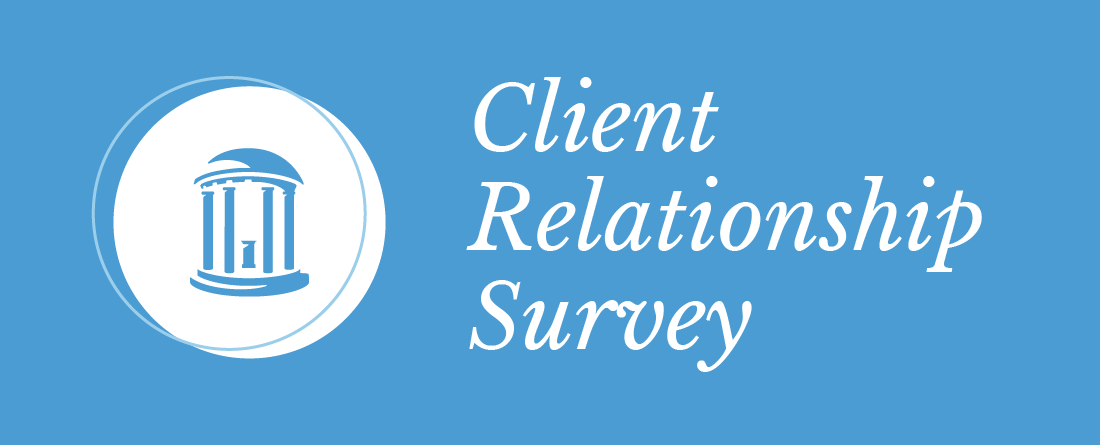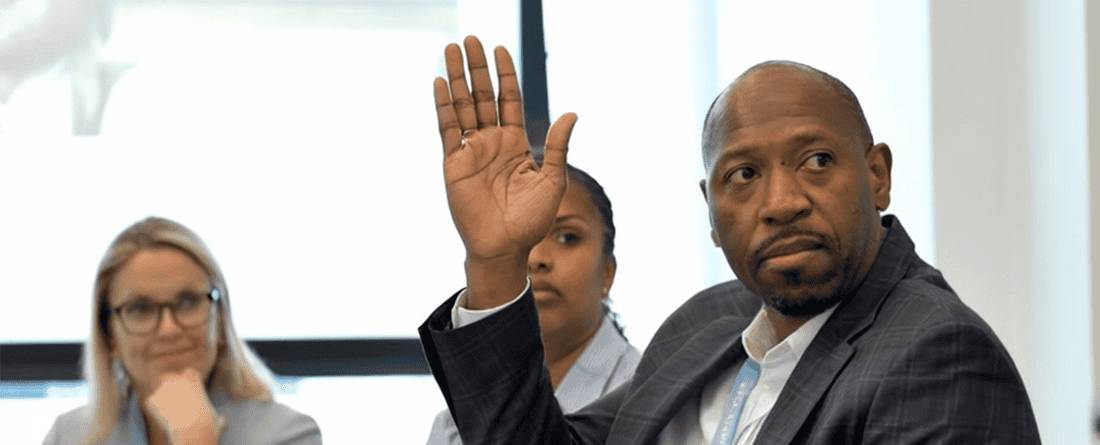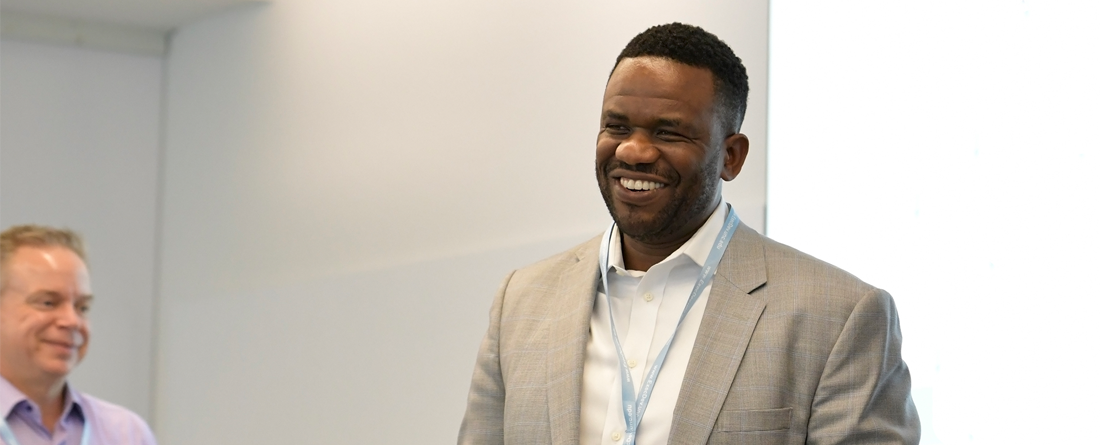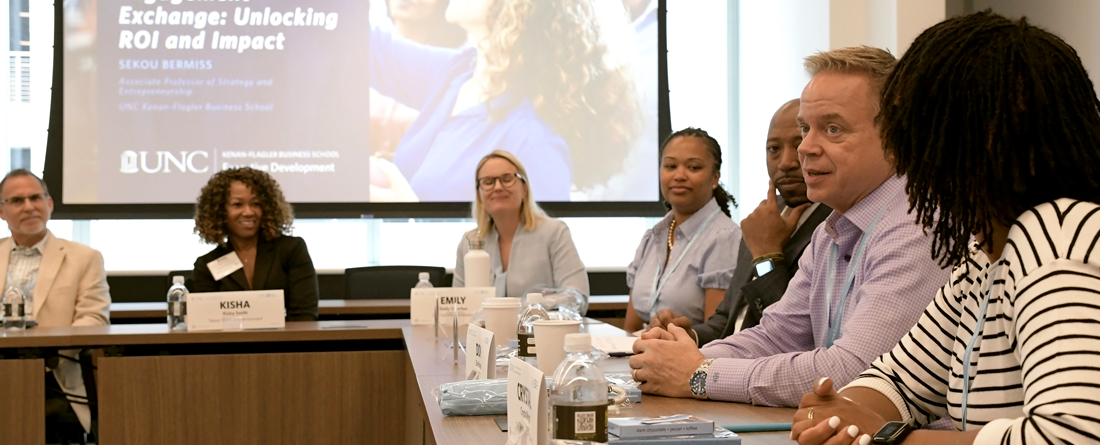Choosing the right executive education partner can be daunting. A quick Google search for “executive development programs” yields numerous familiar and unfamiliar names, along with enticements that might seem as if they are all saying the same thing. This article highlights key factors for selecting a leadership development partner, drawing on insights from three experts from the UNC Executive Development team.
Meet the Experts

Senior Director, Client Engagement & Partnerships

Program Director
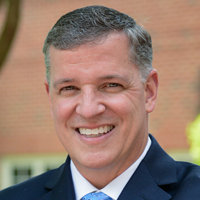
Program Director, Government & Defense Sector
Back to the Beginning
Executive education began in 1931 when a group of American industrialists created a program to train young managers in business decision-making. Today, executive education is a $42.5 billion industry with hundreds of providers. With so many options, choosing the right partner for optimal learning and return on investment is challenging. Here are four key questions that your organization should ask when selecting an executive education partner.
1. How Well Does the Provider Listen?
Professional relationships, like personal ones, start with a “getting to know you” period when both parties assess expectations, compatibility, and mutual goals. During this crucial phase, the right executive education partner will start by developing a deep understanding of your organization, people, and culture.
UNC Executive Development Program Director Tony Laffoley emphasizes that, during this critical time, listening is more important than talking. “We [as executive education providers] must stay curious. Before designing a program, we must understand what our clients want to achieve and why. Spending time upfront to align on goals ensures that the program will focus on what matters the most.”
Debbi Clarke, Senior Director of Engagement and Partnerships, agrees. She notes that a good executive education partner builds strong relationships and mutual understanding. “New clients often need more one-to-one time with [our] team to get acclimated to [the] process.”
Choose an executive education provider whose approach begins with listening. The provider should review your current learning initiatives and consult with your key stakeholders to gain insights into your unique needs and ensure that programs remain aligned with your organization’s strategic goals.
2. Does the Provider Understand Your Organization’s Challenges?
Every organization faces unique learning and development challenges. Patrick Martin, Program Director with the Government & Defense Sector team, highlights some current trends in organizations who partner with UNC Executive Development. “Talent recruitment, development, and retention remain the top concerns,” he says. “We also notice the constant need to innovate, make data-informed decisions, and utilize artificial intelligence.”
Identifying your organization’s key learning gaps is only half the battle, though. “Learning and development leaders are very busy,” says Debbi. “Their main challenge is the time required to thoughtfully develop, design, and deliver impactful programs.”
As you assess executive education providers, ask about their focus areas and expertise. Select a partner that can deliver proven, research-backed insights tailored to your organization’s specific challenges. This approach will maximize the learning impact and foster meaningful and lasting improvements in leadership capabilities and organizational performance.
3. Is the Provider Focused on Knowledge Transfer, or Behavior Change?
An impactful executive education program goes beyond merely transferring knowledge or skills. “Knowledge transfer is fine if it’s just for its own sake,” says Tony. “It is the easiest learning to deliver and allows a lot of material to be covered in a short time. But knowledge transfer is the least effective for creating sustained changes in behavior, and this is normally what clients are looking for.”
Patrick agrees that effective executive programs focus first and foremost on changing behaviors to create meaningful change that lasts. “The idea that it’s all about ‘knowledge transfer’ is a myth. It’s actually 75% behavior and only 25% knowledge.”
Your organization’s executive education provider should prioritize achieving sustained learning and behavior change. This means creating opportunities for participants to continue exploring key concepts after they return to work using tools like assessments, learning prompts, events, peer groups, and coaching. This will help ensure that learning sticks and changes in behavior last.
4. How Will the Provider Help Your Organization Measure Return on Investment?
It’s crucial to choose an executive partner that can help your organization measure the learning’s return on investment (ROI).
“Executive development opportunities require a significant commitment of time and resources,” says Debbi. By evaluating ROI, an executive education provider will help your organization determine if the investment of time, money, and effort is yielding increased organizational performance. Measuring ROI also allows for continuous improvement by identifying opportunities for enhancement.
The challenge, though, is that there is no direct way to measure outcomes like “improved leadership skills” or “enhanced strategic thinking.”
“Measuring ROI can be challenging for learning and development professionals,” Patrick says. “[Our team] has found that it works best when measuring impact is considered early and integrated into the learning journey design process.”
Tony recommends that executive education providers tackle this challenge by helping clients identify tangible behaviors that can be used to assess the impact of the learning experience. “I try to help clients think about the investment they want to make in their leaders and how to maximize the likelihood of achieving the desired learning outcomes. The most successful clients prioritize identifying observable behaviors that signify ‘better’ leadership aligned with the organization’s needs and invest in gathering feedback on these behaviors over time.”
Choose an executive education partner that is enthusiastic about delivering measurable value to your organization. The provider should have a plan for integrating ROI measurement early in the program design, identifying observable metrics associated with desired learning outcomes, and gathering data on these metrics over time.
Shaping Your Organization’s Future
By developing your organization’s next generation of leaders, you are shaping its future. It is therefore critically important that your organization chooses the right executive education partner. First, ensure the provider listens well and understands your organization and its people. Second, choose a provider that can deliver expertise on your organization’s challenges. Third, prioritize partners focused on behavior change and sustained learning rather than just knowledge transfer. Finally, choose a partner who can help measure ROI and ensure that your investment translates into tangible organizational benefits and continuous improvement. By asking these four questions, you can find a provider who is not just a “vendor,” but a collaborative partner that truly aligns with and supports your organization’s long-term success in a dynamic and unpredictable world.
Choosing the Right Executive Education Provider: Quick Tips
- People: It is important to know who your main point of contact will be. Your team should include a primary collaborator throughout program design, development, delivery, and learning sustainment.
- Real Recommendations: Talk to your network about their leadership and development experiences. Ask providers how much of their business comes from existing clients.
- No Gimmicks: Ensure learning experiences are closely aligned with your objectives. For instance, if a provider suggests a ropes course activity, ask how it integrates with other learning methods, what framework it belongs to, and how it will be applied.
- Meeting You Where You Are: Inquire about the provider’s primary focus, areas of expertise, and sources of research-based learning. The provider should offer guidance and recommendations to help your organization understand all potential options and next steps.



